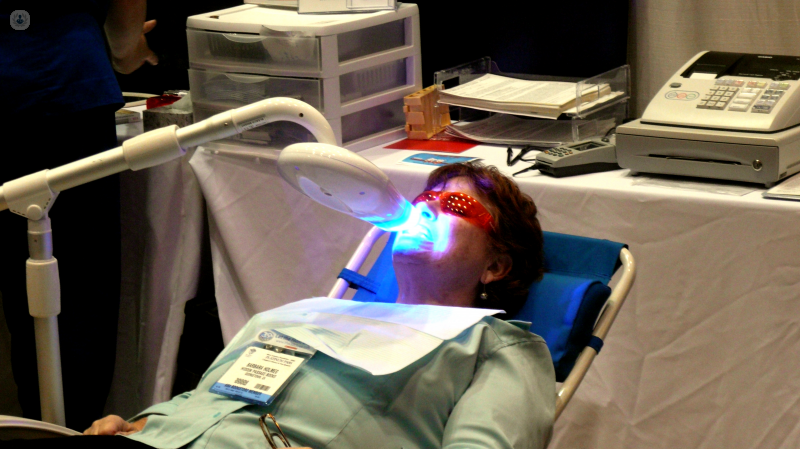


What is laser dentistry? (Include type of anaesthetic)
Laser dentistry is the use of lasers in dental procedures. There are a number of procedures where the use of lasers may be beneficial due to their accuracy and their ability to prevent bleeding, among other benefits.
Why would you do it?
Laser dental procedures are usually less painful due to the accuracy of the laser (although this may depend on the skill of the dentist). It may appeal to those who are nervous, or suffer from dental phobia, and want to maximise their sense of safety and comfort.
Lasers have several advantages:
- High accuracy minimises damage to surrounding tissue.
- Wounds heal faster.
- Bleeding is minimised by the laser beam.
- The high-energy beam of light sterilises the area, reducing the risk of infection.
- Anaesthesia may not be necessary.
- Stitches may not be necessary.
What does it involve?
There are many applications for the use of lasers in dental surgery. They can be used in the treatment of benign tumours, cold sores, and the temporomandibular joint, and a laser-assisted uvula palatoplasty (LAUP) can be performed to reshape the throat to treat sleep apnoea. They can also be used to aid nerve regeneration and the teeth whitening process, and Optical Coherence Tomography utilises lasers to view tooth and gum tissues in real time.
There are two types of dental laser: hard tissue lasers and soft tissue lasers. The difference is the wavelength of the light they emit.
Hard tissue lasers
Hard tissue lasers are easily absorbed by a substance found in bone and teeth called hydroxyapatite, which allows it to cut through these hard tissues. Hard tissue lasers are used for procedures such as treating cavities, preparing the tooth for fillings, and sealing tubules on the root of the tooth to treat sensitivity to heat and cold.
Soft tissue lasers
The wavelength of soft tissue lasers is readily absorbed by water and haemoglobin, which allows it to target soft tissue, such as the gums. It seals nerves and blood vessels as it cuts, thereby minimising pain and bleeding – in fact, some patients don’t experience any pain at all after the operation. Soft tissue lasers also promote healing. They are used in procedures that reshape the gums, removing soft tissue folds caused by badly-fitting dentures, and frenectomies for patients with restricted tongues (usually children or babies).
